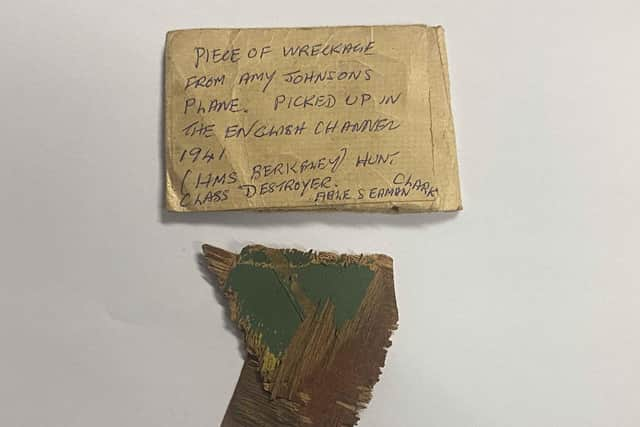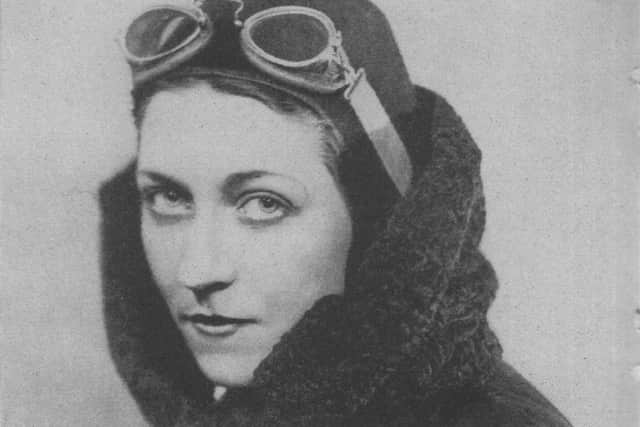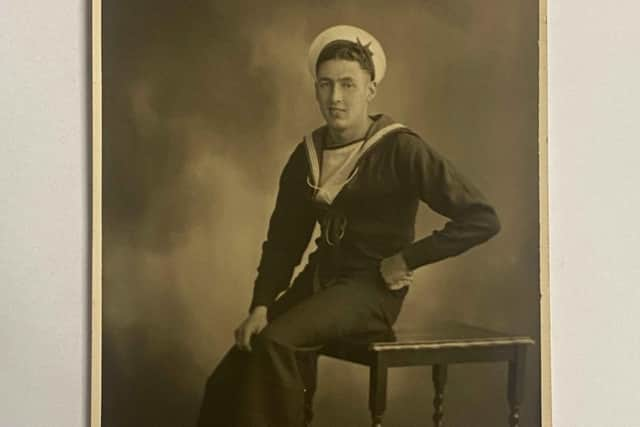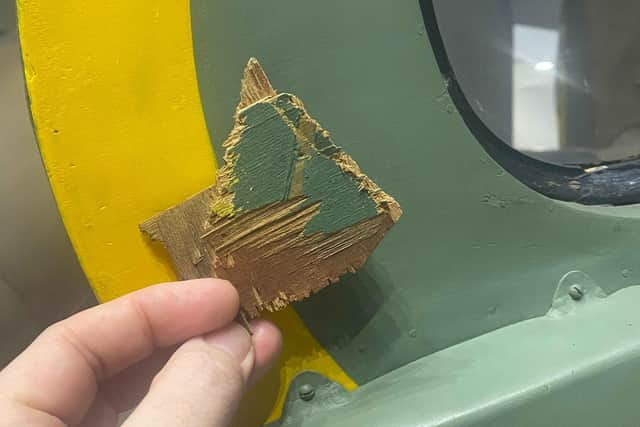Fragment from legendary Yorkshire aviator Amy Johnson’s doomed plane is found after 83 years
Amy Johnson, from Hull, who was the first woman to fly solo from London to Australia, lost her life in an aviation accident on January 5, 1941.
Now a piece believed to be from the parachute door from her aircraft has been found.
Advertisement
Hide AdAdvertisement
Hide AdMystery still surrounds the legendary aviator's death at the age of just 37 during the Second World War.


Though adverse weather conditions were blamed, it was later claimed her plane had been downed by friendly fire.
She had been piloting an Airspeed Oxford for the WW2 Air Transport Auxiliary from Prestwick to RAF Kidlington, near Oxford, when tragedy struck.
Reportedly out of fuel, she bailed out as her aircraft crashed into the Thames Estuary near Herne Bay.
Advertisement
Hide AdAdvertisement
Hide AdHer body was never found but the story of her remarkable life has re-emerged thanks to the discovery of the plane fragment.


It will be sold by Hansons Auctioneers on February 28 with an estimate of between £1,000-£2,000.
Matt Crowson, Head of Militaria at Hansons, said: “I was amazed to receive an email asking, ‘Would I be interested in a piece of Amy Johnson’s aircraft wreckage’.
"The item was inherited by our vendor from his uncle, Ronald Arthur Clark, both from Enfield.
Advertisement
Hide AdAdvertisement
Hide Ad"Ronald said he’d scooped it out of the water and put in his pocket during efforts to rescue Amy.


“Back in 1941 Ronald was an Able Seaman on HMS Berkeley, an escort vessel in the English Channel.
"It was among ships which attempted to rescue Amy after her parachute was spotted coming down.
"She was seen alive in the water, calling for help. However, conditions were poor.
Advertisement
Hide AdAdvertisement
Hide Ad"There was a heavy sea and a strong tide, snow was falling and it was intensely cold. Ropes were thrown to Amy but she couldn’t reach them.


"Her flying bag, log book and cheque book later washed up nearby.
“The discovery of the plane fragment is significant. No other pieces of the aircraft are thought to exist.
"Some sources say the plane may have been recovered and quickly burnt, perhaps suggesting a cover-up of a friendly-fire incident.
Advertisement
Hide AdAdvertisement
Hide Ad“The fragment is constructed from two layers of thin plywood, glued together and set at a 45 degree angle to provide maximum strength.
"The surface paint has been compared to an existing Airspeed Oxford in London’s RAF Museum.
"Given the distinctive green shade and traces of yellow, it’s likely the piece was from the parachute exit door.
"This was the only part of the aircraft constructed from ply, the fuselage section being linen covered.
Advertisement
Hide AdAdvertisement
Hide Ad“The reverse of the fragment was inscribed by Ronald Clark at the time. It states, ‘piece of fuselage from Amy Johnson’s plane, crashed 1941’."
The auctioneers said Ronald’s Royal Navy service records confirm his service on HMS Berkeley at the crash site in 1941.
Matt added: "Amy broke the mould for women and raised expectations about what they could achieve in life.“We can never be absolutely certain what happened to her that fateful day in 1941, other than it was a terrible accident.
"We hope this discovery will shine new light on Amy’s life and remind new generations of her indomitable spirit of adventure.”